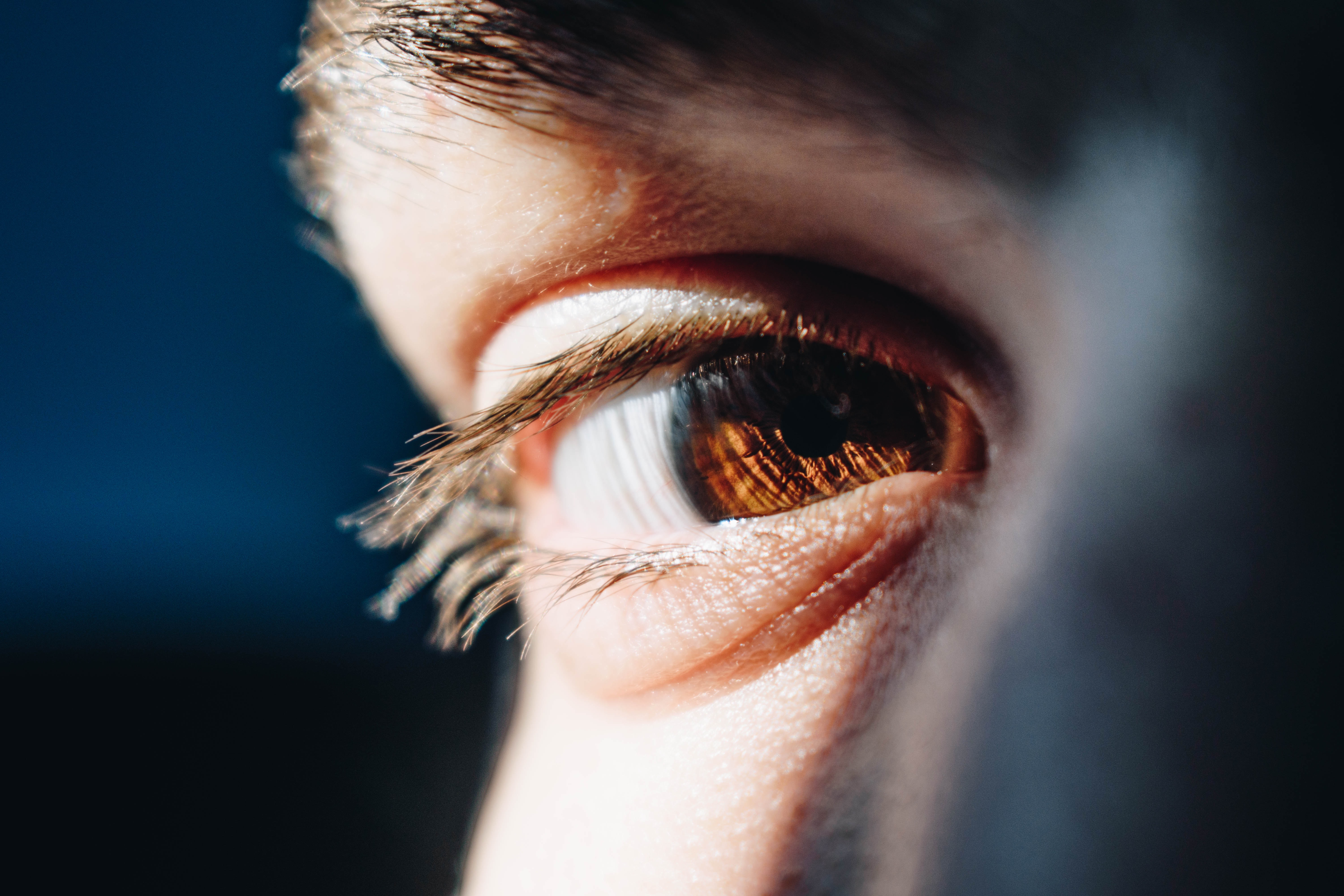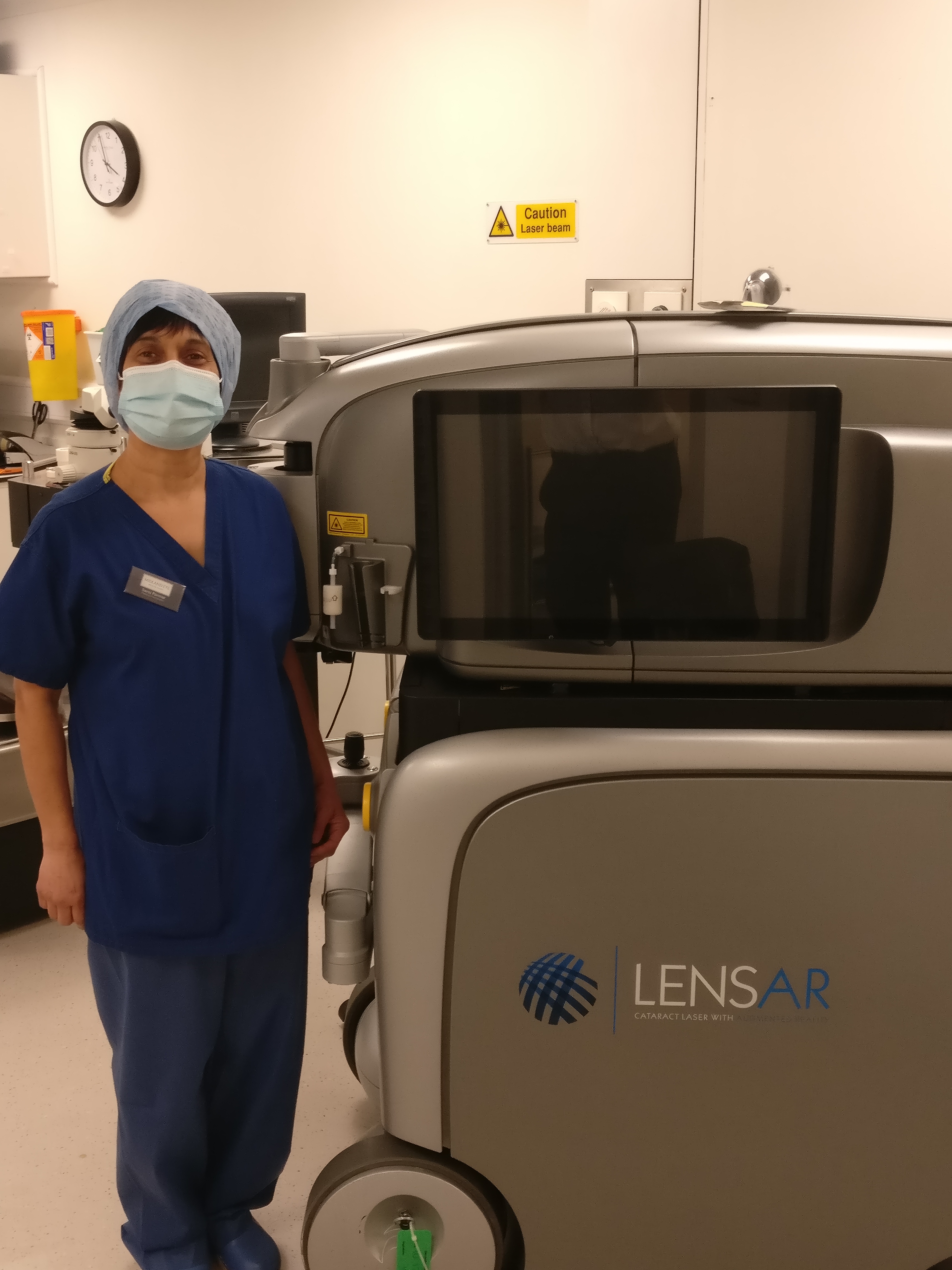For assistance call us on: 0121 711 2020 Email us
Eye health in the ‘new normal’ – what you need to know

Looking after your eyes is more important than ever. Lockdown increased people’s screen time with a recent survey of 2,000 people suggesting that half used screens more since Covid struck, and a third (38%) believed their eyesight had worsened during this time. Making matters worse, one in five adults said they were less likely to get an eye test now than before the pandemic, in fear of catching the virus.
These are worrying statistics, and there’s no doubt prolonged screen time can contribute to worsening vision, and make existing eye problems worse. So what can be done to protect your vision and promote good eye health in ‘the new normal’? Professor Sunil Shah has a few suggestions…
1. Know the signs – don’t wait if you’re having a problem
First things first, it’s important to know the danger signs when it comes to your eyes. Whether we’re in a pandemic or not, seek urgent advice if you experience any sudden loss or reduction of vision, eye pain or injury, distortion of images or extreme sensitivity to light. Emergency eye care is available both in the community via local optometrists or hospital A&E departments, and you shouldn’t take any chances when it comes to your eye health.
2. Covid and your eyes
The main symptoms of coronavirus are well known, and include a new continuous cough and fever, a high temperature and a loss of taste and smell. So while it has been confirmed that Covid affects our taste and smell, can it also affect our eyes?
According to a large study published in the New England Journal of Medicine, researchers documented ‘conjunctival congestion’ in 9 of 1,099 patients (0.8%) with Covid-19 from 30 hospitals across China. In addition, the British Emergency Eye Care Society is aware that Covid-19 patients may develop a red, watery eye during their illness.

The condition, they say, will resolve without eye drops and they advise not to worry about your eye health with regards to Covid-19. At this stage therefore, the main symptoms of Covid do not appear to affect vision.
However, while the virus may not affect your eyes, you can actually still catch it through your eyes. Virus particles are released when infected people cough or sneeze, and these droplets can then be inhaled by other people who are nearby. This includes through your eyes. Your eyes are lined by mucous membranes, a thick protective fluid. Primarily, this membrane is to stop dirt and grit from entering your body through the eyes, as well as ensuring that your eyes stay well hydrated. However, with Covid this mucous membrane becomes an easy point of access for the virus to enter your body. Recent research has shown that people who wear glasses are up to three times less likely to catch the virus.
3. Mask-associated dry eye – causes, symptoms and relief
We’re all getting used to wearing face coverings to help prevent the spread of Covid-19. However, recent research has found a corresponding increase in cases of eye irritation and dry eye among people who regularly wear masks. Health experts have begun to call this condition ‘mask-associated dry eye’ (MADE), and those who wear masks for longer periods of time may be more likely to experience these symptoms.
It’s widely thought that the limited airflow and ventilation within a facemask is the main cause of MADE. If your face covering does not fit tightly to your face, when you breathe out, air can escape out of the top of your mask and across the surface of your eyes. This increased flow of warmer air could cause your tears to evaporate more quickly, leaving your eyes feeling dry, irritated or less lubricated. Aside from your eyes feeling irritated, if they become dry, they may also be sore, feel gritty, blurry, appear red, and you could even be more sensitive to light. There’s still research being done to understand MADE and how it can be prevented, but some tips include ensuring your mask is properly fitted, using eye drops, and limiting the amount of time you spend in air-conditioned rooms as the circulated air in these environments can dry out your eyes quicker.
4. Home working and the ‘new normal’ – general tips on eye care
Right at the top of the article we mentioned the increase in people’s screen time, and it’s important to now consider ways to prevent eye-related issues from prolonged screen-time such as dry eyes, itchiness and headaches. But first, what’s the reason for the discomfort and pain from screen time? Well, it’s to do with ‘blue light’, which emits from the screens of computers, laptops and smartphones, and can be harmful to your eyes if you are using them for extended periods of time.

This is because they have the highest energy wavelength of visible light, penetrating right through the eye’s natural filters.
One way to relieve the discomfort and pain is to follow the 20-20-20 rule to relax your eye muscles and decrease the accommodative stress. For every 20 minutes take a break of 20 seconds from your device and look at distant objects that are 20 feet away. It’s a simple but effective method that can really help in the long-term. Other simple tips include blinking frequently to keep up the natural lubrication of the eye and to keep up adequate hydration to promote general eye health.
5. Advice on specific conditions
Diabetic eye screening – important tests to check for eye problems:
Many people with diabetes – particularly those with poor diabetic control, which results in too-high blood sugar levels – have damaged blood vessels in the retina. This condition, called diabetic retinopathy or diabetic eye, affects up to eight out of 10 patients who have had diabetes for 10 years or more. This can lead to sight loss if it’s not found early.
It’s vital to keep up with eye screening tests, which can find problems before they affect your sight. Pictures are taken of the back of your eyes to check for any changes. You can find out more about treatments for diabetic retinopathy on the Midland Eye website here.
Cataract delays can put you and your eye health at risk
One of the many devastating consequences of the Covid-19 pandemic has been the increasing waiting lists for people needing treatment. This includes people waiting to remove cataracts, who are currently experiencing waits of up to six months on the NHS. This is particularly worrying for older people, who are more likely to require cataract removal, and who are at increased risk of a fall because their vision is so impaired while they wait.
Alternatives to NHS care for the surgery include independent sector providers offering NHS care, and private clinics, where you will be able to receive fast-tracked care and treatment. Find out more about cataract surgery and what it entails here.
These simple tips will go a long way towards protecting your eyes during this lockdown. If you have any health concerns or would like to speak about your eye health with a professional, get in touch with our friendly team at Midland Eye. We offer seven-day access to our eye experts, and you can book a virtual consultation with our team if you prefer.



